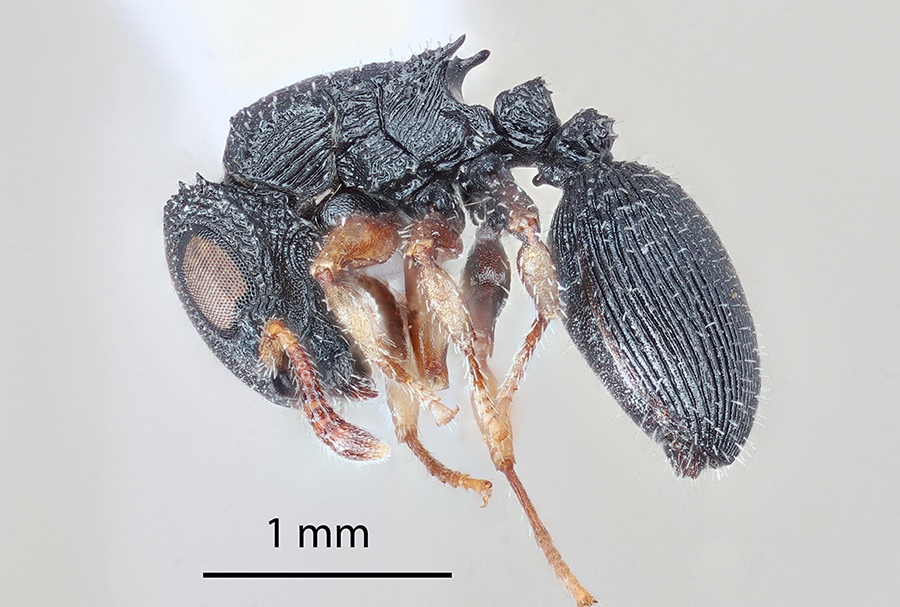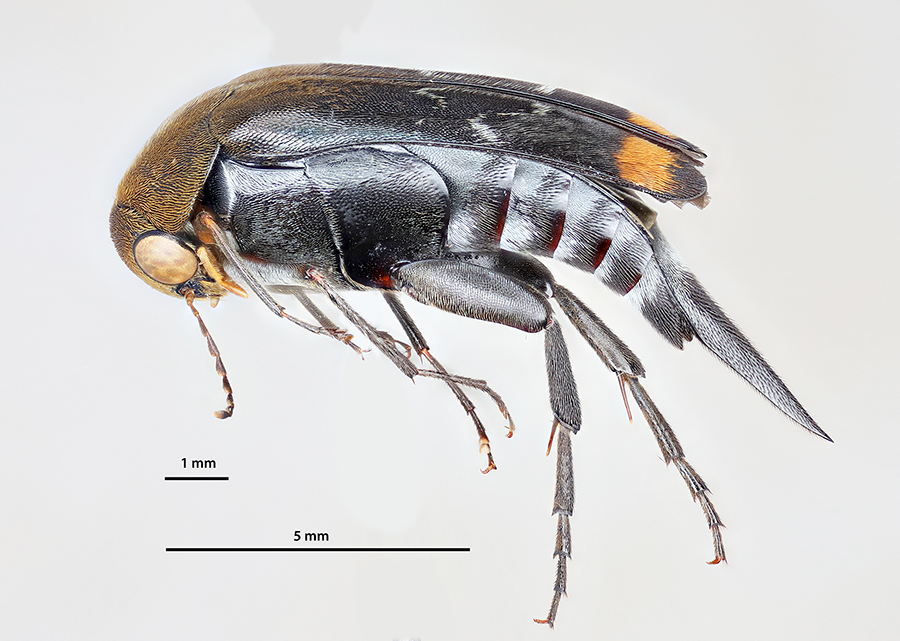Cataulacus and Mordellidae
Today we have selected images of two species, one of which in recognition of Labor Day; the 1st of May and an official holiday in Kenya. What better example of the virtues of hard work could there be than a worker ant – this one a species of Cataulacus, a genus with 15 species recorded from Kenya, most of them associated with forest habitats. Happy Labor Day!
The second image is of a Mordellidae, a fairly large family of beetles, with the happy-go-lucky common name of “tumbling flower beetles”. While amusing, the common name is also precisely informative. Species are often found on flowers and they do tumble, their wildly gyrating hops and flips delivering them from the threat of a potential predator (such as an entomologist out collecting in the field) as they fall through the plant to disappear in the leaf litter or detritus below, lost forever, no matter the intensity of searching for the beetle. It appears that many beetles, not just mordelllids have mastered this disappearing act.
Worldwide, there are about 2300 species of mordellids, with two genera dominating, (Mordella and Mordellistena). Mordellids are among the easiest of beetles to recognize. Shaped a bit like a door stop, the front of the body is the widest part, with the body tapering towards the last segment (pygidium) of the abdomen. Their success is due largely on their “choice” of host plant. Adult mordellids are mostly pollen feeders and are commonly found on Apiaceae (=Umbelliferae, with nearly 4000 species) and Asteraceae (=Compositae, with ca. 20,000 species). That’s a lot of plant hosts to choose from.
Recently, compelling evidence has been presented arguing that Mordellidae provide the earliest known example of an insect plant-pollinator. The extinct mordellid, Angimordella burmitina. was found with attached angiosperm pollen inside a piece of Burmese amber dated to ca. 100 million years ago. This more than doubles the previously oldest example of pollination by insects (bees) in the fossil record.
You can read about this in the Proceedings of the National Academy of Sciences.
Tong Bao et al. Pollination of Cretaceous flowers. PNAS, published online November 11, 2019; doi: 10.1073/pnas.1916186116

Cataulacus

Mordellidae
Credits: Dr Robert Copeland

